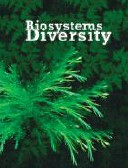Composition of pigment complex in leaves of soybean plants, inoculated by Bradyrhizobium japonicum, subject to metal nanocarboxylates and various-levels of water supply
Composition of pigment complex in leaves of soybean plants, inoculated by Bradyrhizobium japonicum, subject to metal nanocarboxylates and various-levels of water supply
Author(s): S. Y. Kots, L. I. Rybachenko, A. V. Khrapova, K. P. Kukol, O. R. Rybachenko, Y.O. KhomenkoSubject(s): Agriculture, Environmental interactions
Published by: Дніпропетровський національний університет імені Олеся Гончара
Keywords: rhizobia; Glycine max; chromium nanocarboxylate; germanium nanocarboxylate; drought; photosynthetic pigments;
Summary/Abstract: A distinctive feature of legumes is the ability to combine two most important processes: photosynthesis and nitrogen fixation. However, the course of those processes, and therefore seed potential of those crops depend on a number of biotic and abiotic factors, the commonest being drought. Therefore, interest in physical-biochemical resistance of the plant organism to abiotic stress factors is increasing, as well as search for optimum ways to increase its adaptability. Success of adaptation of a plant’s organism to unfavourable environmental factors is known to largely depend on optimal functioning of assimilative apparatus. Some indicators of the condition of the apparatus are the content and ratio of photosynthesis pigments. Therefore, we aimed at determining the reaction of the pigment complex of Glycine max (L.) Merr. plants, grown against the background of optimal and insufficient watering, to inoculation of seeds with rhizobia bacteria Bradyrhizobium japonicum, cultivated using nanocarboxylates of chromium, cobalt, iron, copper and germanium. Research has shown that utilization of germanium nanocarboxylate as a component of inoculative suspension led to the highest content of chlorophylls in leaves of soybean of the studied variants in the blossoming phase during optimal watering, as well as significant increase in the content of carotenoids compared with the control plants regardless of the level of watering. At the same time, this element caused no significant effect on the chlorophyll content in plants grown in drought. It was confirmed that among soybean plants that were in stress conditions (blossoming phase) for two weeks, the highest content of chlorophylls was in leaves of plants grown from seeds inoculated with rhizobial suspension with addition of chromium and copper nanocarboxylates, which caused 25.3% and 22.8% increase in chlorophyll а, 29.4% and 32.3% in chlorophyll b and 26.4%% and 23.8% in them respectively, compared with the control. Furthermore, chromium and copper nanocarboxylates stimulated the content of carotenoids in the same plants, though it was less expressed than after adding germanium nanocarboxylate. The highest content of photosynthetic pigments in plants after the watering was resumed (phase of bean formation) was in cases of applying chromium and germanium nanocarboxylates. It was confirmed that the most efficient way to protect the pigment complex of soybean plants during drought was using chromium and germanium nanocarboxylates as components of inoculation suspension.
Journal: Biosystems Diversity
- Issue Year: 30/2022
- Issue No: 1
- Page Range: 80-87
- Page Count: 8
- Language: English

